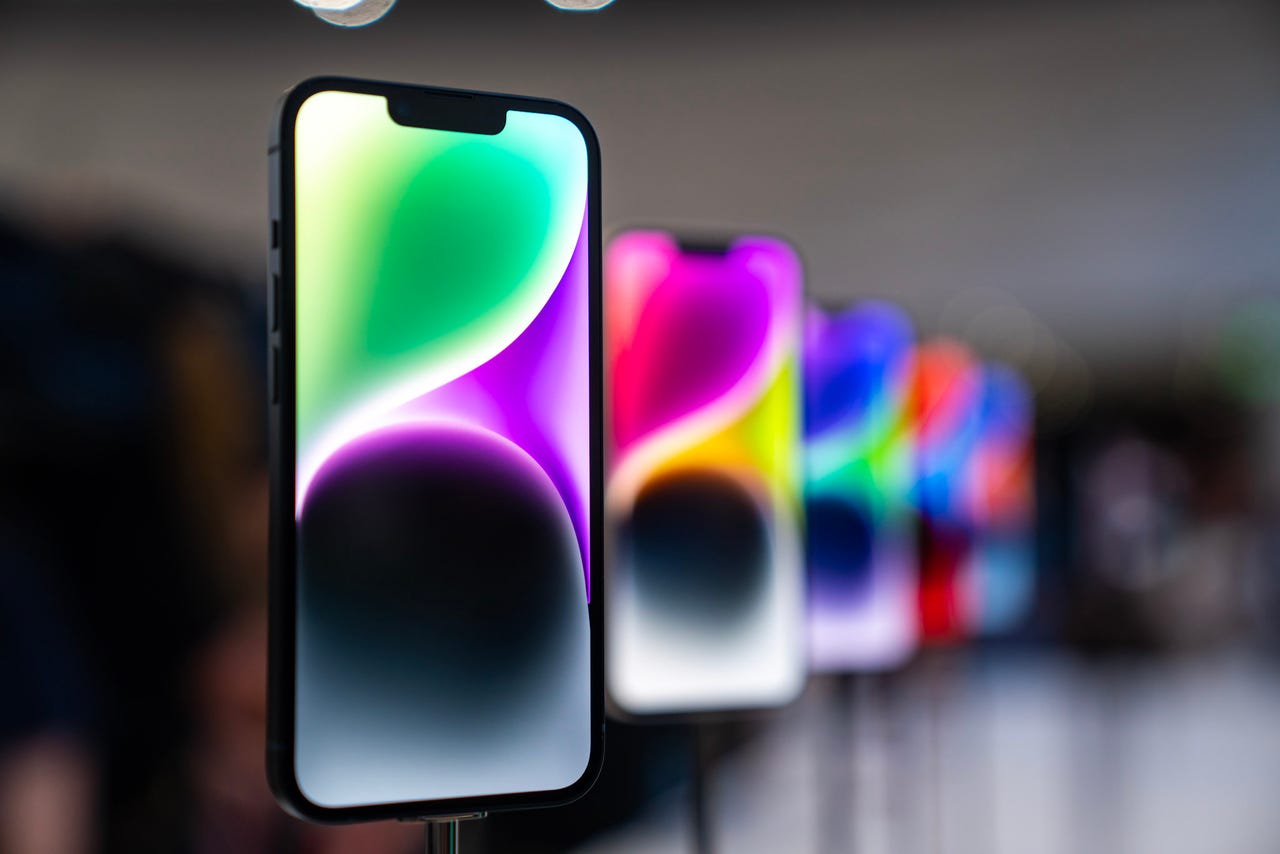iPhone 14: Three charts that show how Apple's strategy is developing

Apple's annual iPhone launch is expected to deliver a new family of smartphones in the shape of the iPhone 14 (and variations including the iPhone 14 Plus, 14 Pro and 14 Pro Max).
Smartphones
While many people will focus on the new features, what's also interesting is how the iPhone 14 fits in with Apple's wider strategy -- something that's pretty clear when you look at some of the data.
SEE: iPhone 14 Pro vs. iPhone 13 Pro: Is the newest iPhone worth the upgrade?
Right now, it seems that Apple's strategy of focusing the high end of the smartphone market continues to work: according to data from tech analysts Canalys, Apple has extended its dominance at the top of the market in recent years.
"Demand for premium smartphones has increased over the previous years with Apple continuously increasing its dominance in the segment. Despite economic headwinds and overall shrinking demand for smartphones, demand for premium smartphones is expected to remain strong," said Canalys research analyst Le Xuan Chiew.
Tech analyst firm Counterpoint has a similar take: as 5G becomes more prevalent, consumers are upgrading their devices, and as a result Apple has managed to capture over 78% of the $1,000+ price segment, and 57% of the market for phones that cost more than $400.
"Consumers whose finances were not affected by the pandemic have been using the extra disposable income created due to restricted travel to buy more expensive devices, including smartphones," said Counterpoint senior analyst Varun Mishra.
It's also interesting to see which of Apple's handsets people are buying: the standard iPhone 13 model drives the bulk of sales according to the chart below. Note the position of iPhone 13 Mini -- some have suggested that this relatively poor performance is among the reasons we might not see a refreshed model any time soon.
More broadly, the iPhone ecosystem still has plenty of momentum. Last year saw the most iPhones shipped so far, as shown by the chart below -- and the iPhone now accounts for over half of all smartphones used in the US.
SEE: Here's everything Apple announced during its 'Far Out' event
Now some of those might be pretty old models, but Apple's policy of supporting handsets longer than many of its rivals means that it has build a broad base of users, which it can then use to target with new products (like the Apple Watch) and services like Apple Pay.
But it's not just about the iPhone: there's almost certainly an Apple Watch update on the way too. Again, Apple has stretched its lead in the smartwatch market, shipping 16 million units in the first half of last year but 18 million units in the first half of this year, and increasing its market share from 51% to 52%, according to Canalys.
All of this goes to show just how powerful a position Apple has built in the market, and with the smartphone market as mature at it is, it's hard to see that picture changing much in the near future.
